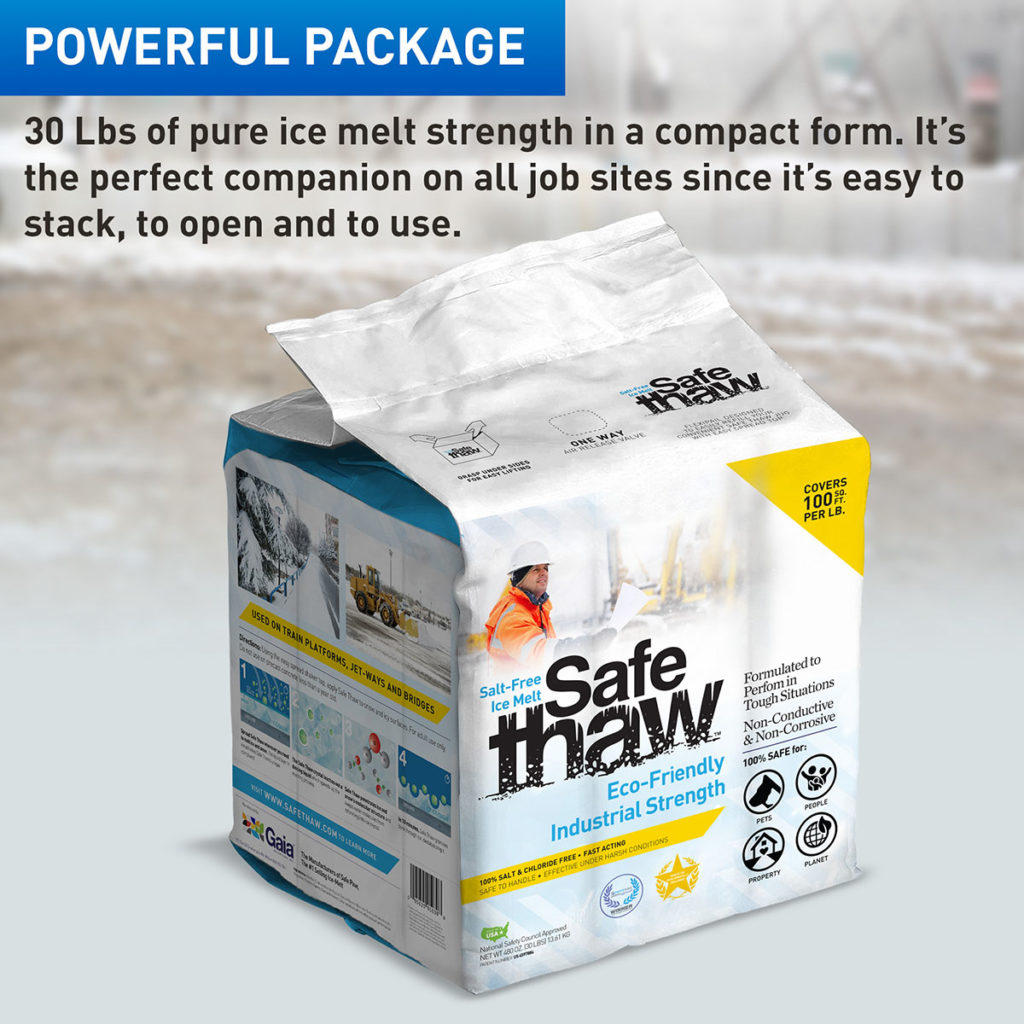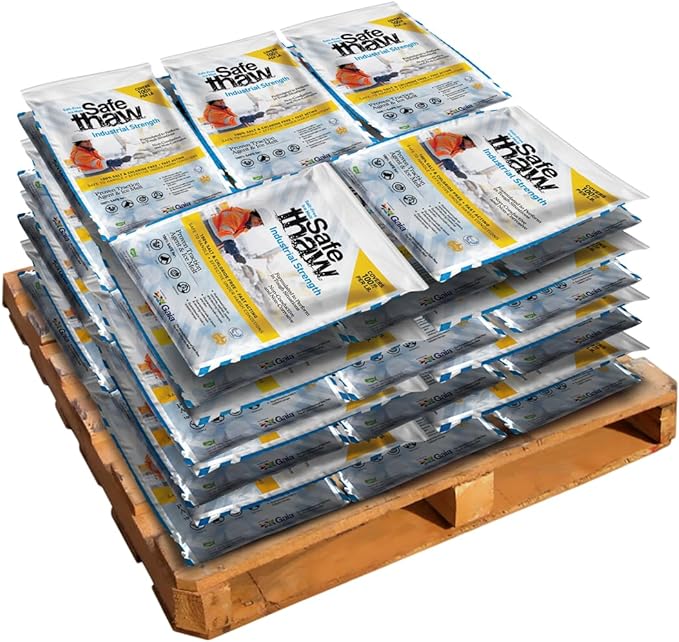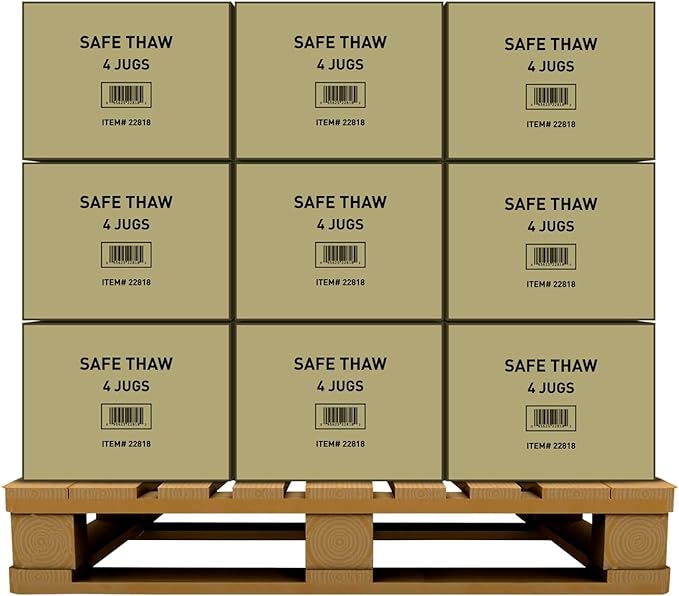Long Term Impact Of Snow On Your Concrete

If you’re like most homeowners, you probably have a concrete driveway or patio in your yard. And if your house is like mine, which is pretty typical for its area and age, then there’s a good chance that during the winter months it will be exposed to snow and ice. Snow and ice can cause problems for your concrete—especially if it’s improperly protected—but luckily there are some things you can do to prevent damage or minimize damage once it occurs.
When it comes to winter weather and concrete, most people think of the problems that come with ice. Concrete is strong—but ice can crack it. Ice can also cause damage to concrete by expanding and contracting in the freezing process (ice expands more than water). This expansion causes cracks and fissures, which weaken the structure. If these cracks become large enough, they’ll lead to pieces falling off your concrete surface or driveway slab. Therefore, you must know how to melt ice the fastest.
Long-Term Impact of Snow on Your Concrete
Concrete driveways and pathways are built for durability, but prolonged exposure to snow, ice, and freezing temperatures can take a toll. From cracks to spalling, the winter months can cause significant damage if proper care isn’t taken. Understanding the effects of snow and how to manage them is key to prolonging the lifespan of your concrete surfaces.
In this guide, we’ll discuss how snow affects concrete, examine eco-friendly alternatives to traditional deicers, and provide practical tips for maintaining your concrete driveway. Plus, we’ll explore questions like how much does a concrete driveway cost and whether cat litter melts ice effectively.
Environmental Impact of Deicing Agents on Concrete
Deicing agents are a go-to solution for managing ice during winter, but they come with environmental trade-offs.
Soil and Water Contamination
Traditional deicers like sodium chloride can leach into the ground, increasing soil salinity and contaminating nearby water sources. This affects local vegetation and aquatic ecosystems, making eco-friendly alternatives essential.
Harm to Concrete Surfaces
Chloride-based deicers penetrate concrete surfaces, accelerating freeze-thaw cycles and leading to spalling, scaling, and cracks. This is especially problematic for concrete driveways that lack adequate sealing.
Eco-Friendly Alternatives
Consider alternatives like Safe Thaw, which are designed to minimize environmental impact while effectively melting ice. These products are safe for both the environment and your concrete driveway.

Safe Thaw
Safe Thaw was created as the ice management solution for tough winter environments. Ideal in commercial and industrial properties, shops, government agencies, bridges, and construction.
The Damage Will Become Apparent When The Snow Melts, And You May Notice Cracks In Your Driveway Or Patio.
As the snow melts, you may notice cracks in your driveway or patio. These cracks may be small or large, and they can be very unsightly. The damage will become apparent when the snow melts, and you may notice cracks in your driveway or patio.
Salt Can Damage Your Concrete
If you choose to use salt to melt ice on your sidewalks or driveway, you can ignore the consequences. Salt can cause concrete to chip or crack, and it can also stain and discolor the concrete. If possible, try using a natural ice melt for melting snow on sidewalks and driveways.
Snow Can Also Create Damage To Your Concrete If It Is Not Properly Cleared From The Surface Of Your Concrete.
Snow can also create damage to your concrete if it is not properly cleared from the surface of your concrete. If you don’t take care of your property, snow and ice will build up on top of your driveway and sidewalks. Over time, this can lead to an uneven surface that could crack or break apart under heavy foot traffic or vehicle traffic in the winter months.
Comparative Analysis of Deicing Products for Concrete Surfaces
Choosing the right deicer can make all the difference in protecting your concrete from long-term damage.
Traditional Deicers
- Sodium Chloride (Rock Salt): Cheap but harmful to concrete and vegetation.
- Calcium Chloride: Effective at low temperatures but accelerates concrete scaling.
Eco-Friendly Deicers
- Safe Thaw: A chloride-free, non-toxic ice melt that’s gentle on concrete and effective in extreme cold.
Non-Chemical Options
- Sand or Gravel: Improves traction but does not melt ice.
- Heated Driveway Systems: Eliminates the need for deicers but requires significant upfront investment.
Best Practices for Applying Deicers on Concrete
Even the best deicers can cause harm if not applied correctly. Here’s how to use them effectively:
Apply in Moderation
Using too much deicer can lead to unnecessary runoff and increased damage. Follow the manufacturer’s recommendations for application rates.
Clear Snow First
Shovel or blow away as much snow as possible before applying deicer. This reduces the amount needed and ensures more effective melting.
Focus on High-Traffic Areas
Concentrate on walkways and driveways where ice poses the greatest risk, rather than spreading deicer indiscriminately.
Long-Term Maintenance Strategies for Concrete Durability
Regular maintenance is key to protecting your concrete driveway from snow and ice damage.
Regular Cleaning
Clean your driveway periodically to remove debris and chemical residues. This prevents buildup that can weaken the surface over time.
Seal Your Concrete
Apply a high-quality sealant every 2–3 years to protect against moisture penetration and freeze-thaw damage. Sealants act as a barrier, reducing the impact of deicers.
Address Damage Promptly
Repair cracks and chips as soon as they appear to prevent them from worsening during freeze-thaw cycles. Use concrete patching materials for minor repairs.
Invest in Proper Drainage
Ensure your driveway has adequate drainage to prevent water from pooling. Standing water is a primary contributor to concrete damage in winter.
Does Cat Litter Melt Ice?
One common winter question is does cat litter melt ice effectively.
Traction, Not Melting
Cat litter doesn’t melt ice but provides traction on slippery surfaces. It’s a temporary fix for icy driveways but doesn’t address the underlying problem.
Better Alternatives
For both melting ice and maintaining your driveway’s integrity, consider products like Safe Thaw. These eco-friendly solutions provide effective melting without harming concrete or the environment.

40 Bags
Safe Paw Thaw Industrial Strength Salt-Free Pet Safe Snow Ice Melter and Traction Agent for Concrete, Asphalt, Decks, Lawns, and More, 43 Pound Bag- 40 Bags

100 Boxes
Safe Thaw Industrial Strength 100% Salt/Chloride-Free, Pet/Paw-Safe Snow & Ice Melter and Traction Agent. Use on Concrete, Asphalt, Roofs & On Any Surface, 30 Pound FlexiPail- 100 Boxes

105 Jugs
Safe Thaw Concrete Safe 100% Salt-Free, Pet Safe Snow and ice Melter, Industrial Strength, Chloride-Free, and Traction Agent. Use on Asphalt, Roofs & On Any Surface, 10 Pound Jug- 105 Jugs
How Much Does a Concrete Driveway Cost?
The cost of installing a concrete driveway depends on several factors, including size, thickness, and reinforcement.
Average Costs
- Standard Driveways: $6–$10 per square foot.
- Stamped Concrete: $12–$18 per square foot, depending on the complexity of the design.
Factors That Affect Cost
- Thickness: A 4-inch slab is standard for residential driveways, while heavy-duty areas may require 6–8 inches.
- Reinforcement: Adding steel rebar or mesh increases durability but also raises costs.
- Location: Local labor and material costs can vary significantly.
Ice Melt for Trex Decking and Concrete Driveways
If you have both Trex decking and a concrete driveway, choosing the right ice melt is essential.
Safe Ice Melts for Composite Decking
Products like Safe Thaw are safe for Trex decking, as they do not contain harsh chemicals that can stain or degrade composite materials.
Protecting Concrete Driveways
Eco-friendly ice melts are equally important for concrete surfaces. Chloride-free options reduce the risk of scaling and spalling, ensuring long-term durability.
How To Melt Ice The Fastest
By selecting the best ice melt for new concrete, you can ensure smooth, pothole-free concrete for years to come. The best strategy to protect your new concrete is to get a natural ice melt.
A natural ice melt called Safe Thaw starts working straight away. The liquid component of the mixture instantly starts to melt the ice by releasing the ice’s surface tension. In addition, the compound’s crystal core will destabilize it and hasten the melting process.
Do not use any ice melt for the new cement driveway.
100% salt & chloride-free, fast acting Ice Management Solution
Conclusion
Snow and ice can have a significant impact on the durability and appearance of your concrete driveway, but with the right strategies, you can mitigate damage and prolong its lifespan. From understanding how much does a concrete driveway cost to exploring eco-friendly deicing options like Safe Thaw, this guide equips you with the knowledge to make informed decisions.
Remember, proper maintenance—including sealing, cleaning, and using safe deicers—is the key to protecting your driveway from winter’s challenges. By investing in these practices, you’ll enjoy a durable, attractive driveway for years to come.
Try Also Our Other Winter Safety Products:
Safe Paw
The Original and #1 Selling Pet and Child Safe Ice Melt for over 20 years. Guaranteed environmentally safe –It won’t harm animals or children, and it won’t damage your property. That’s Safe Paw. Safe Paw can change how winter affects our planet.

Walk On Ice
The handy disposable canister can be taken everywhere, with the same 100% naturally occurring minerals that provide instant traction on ice or snow. Use it on sidewalks, steps, or as an instant traction agent for your car.



